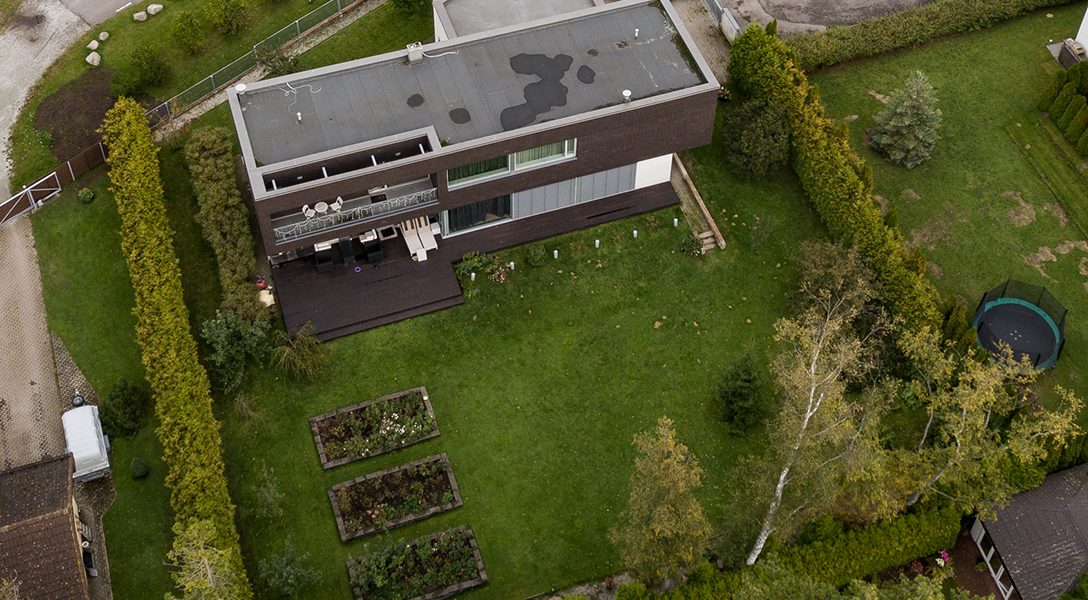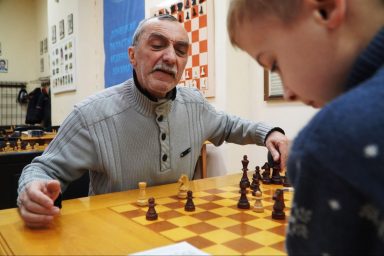WhoWhatWhy probes the Russian connection, visits the dead banker’s family, and hears yet another version of what happened.
This is Part 3 of a 3-part series. Read Part 1 here, and Part 2 here.
While I waited for government officials to get back to me with invitations that never came, I hunkered down and reviewed the recent history of money-laundering-connected violence.
In 2012, Alexander Perepilichny, a 44-year-old Russian whistleblower on money laundering, died suddenly while jogging near his London home, right after a short extramarital fling in Paris during which he ate suspect seafood. After many years, UK authorities closed their investigation, concluding that Perepilichny had died of natural causes — but the case is marked by serious doubts and irregularities. For one thing, a woman who was with Perepilichny in Paris claims that investigators from the UK, where so many Russian oligarchs spend big money, never interviewed her.
In 2017, Daphne Caruana Galizia, a journalist in Malta who was looking into money laundering and was outspoken in accusing officials of corruption, was killed when a bomb blew her car apart. (A “person of interest” in this case was recently arrested.)
In 2018, in Latvia, the country bordering Estonia on the south, Martins Bunkus, a lawyer who worked on winding down the business of a bank that lost its license in 2016 after it broke anti-money-laundering and terror-financing rules, was shot dead while driving.
Money laundering on a scale of note seems to have started almost immediately following Estonia’s achievement of independence in 1991. Danske Bank itself inherited some of this legacy, having acquired, a small so-called “pocket bank” created for its owner’s purposes; this failed, became a different entity, and was bought by Sampo (a Finnish Bank). Then — as part of the takeover mania sweeping the world before the global collapse of 2008 — Danske bought Sampo Bank and got Rehe, Sampo’s CEO, in the bargain.
To better understand the backstory, on my first weekend in Tallinn I went to see Karsten Staehr, an economics professor at Tallinn Technical University who studies banking. Who just happens to be Danish.
“Danske bought Sampo for way too much — and got a hell of a lot of bad customers,” Staehr, a tall, friendly, expansive man, told me over a mug of tea in his office. He said he suspected that, when the directors saw how much money this gamble was actually generating, they couldn’t help but be relieved. That, he thinks, led, at a minimum, to benign neglect of signals that something was amiss.

Removal of sign from Danske Bank headquarters in Tallinn, Estonia, October 5, 2019. Photo credit: Andres Putting / Ekspress Meedia
The general astonishment at the scandal that engulfed Danske Bank is understandable. Denmark is ranked by Transparency International as being consistently perceived as the least corrupt country in the world. And Danske Bank had a reputation for probity.
Eventually, Danske Estonia held roughly 10,000 nonresident accounts — each one potentially generating hundreds or thousands of transactions; besides earning interest on the held balances, Danske generated heavy transaction fees. The vast majority of those accounts had some Russian connection. The branch had a special section that handled only these nonresidents. Most of the bank employees working in this section were ethnic Russians.
For more perspective, I got in touch with Martin Woods, a former UK police officer who, in 2006, became a whistleblower at another big bank (Wachovia), in Australia, where he was digging into another dirty money case. He said this about the Danske Bank Estonian outpost:
“That branch was making so much money, the directors had a duty to shareholders to study it and replicate it in other branches. The fact is, they didn’t replicate it. Were they frightened? Did they not want to take a closer look?”
Maybe it’s true that Danske Bank inherited many of these dubious nonresident accounts, but it also added many more, and, according to one source, Danske itself put on a road show in Russia, seeking out customers from there.
And the bank’s internal documents show that in 2012, when gold was trading at near-record prices, select clients, mostly Russian, were offered a new service: the opportunity to buy gold bars and coins without having to obtain “paper certificates.” This service was promoted as a way to preserve “anonymity.” This recent revelation has led Danish lawmakers to call for an expanded probe of the bank. Danske Bank also had its own branch in Russia — it recently announced that branch was being closed.
As of press time, Danske Bank had not responded to WhoWhatWhy’s inquiry on these issues.
A Deeper Russian Connection
Looming behind this banking operation was Estonia’s relationship with its huge, menacing neighbor. Estonians hold dark memories of Russia’s domination, which formally began in 1940, when the invading Red Army turned the country into a Soviet republic. It took half a century to regain independence.
But Stalin had settled a large population of ethnic Russians into the Baltics, and their descendants are still in the country. For the most part, they still speak Russian, still are not entirely absorbed into the society, and, many claim, still are not really welcomed nor, in some cases, given full opportunities. The Estonians deny this.
In any case, those charged in the Danske Bank case were overwhelmingly ethnic Russians.
In early October, one of the Danske Bank employees in the nonresident department who has been charged spoke to Bloomberg. He explained that he had been under onerous quotas to achieve as many transactions as possible — and underlined just how lucrative this business was for the Copenhagen-based bank. He said that each transaction cost Danske Bank $1, but netted it $90.
Some Russian ethnics among those arrested had also done well for themselves, with acquisition of property, vehicles, and other assets well beyond their apparent means. One banker even admitted he had received a large personal loan from a Russian account holder.
Though some Estonians deny it, others point to signs of ethnic polarization, subtle though they may be, everywhere. I could see the contrast for myself as I strolled the city. One afternoon I walked from the tourist-friendly, recently renovated “hipster” area of Telliskivi — with its tech companies, murals, cafes, art, sustainable fabrics, and craft beers — to a scruffy, time-warp outdoor market where ethnic Russians huddled against the cold, smoked cigarettes and gossiped, and peddled fruit, fish, flowers, and old garage-sale-type wares to a trickle of compatriots.
Call it economic bifurcation if you will, but the cultural divide is palpable. And it undoubtedly played a role in the Danske affair.
“In the Baltic states you had the perfect storm: former Soviet states, recently liberated, a low- paid population, but membership in the EU,” Graham Barrow, a money laundering expert, told me by phone from London. “It was a gateway out of Russia, with plenty of people who speak Russian, and they’re in the EU banking system.”
Most of the laundered funds, Barrow believes, are ill-gotten gains of officials due to public corruption.
“These guys were offering big bucks — and allowed to get away for it. The Baltics were the opening to the washing machine, sloshing around and getting lovely and clean and ending up in London, New York, Miami, Monaco, in big houses and yachts: the lifestyle they all want. And everyone’s happy.”
At a meeting this October of the top European organization combating financial crimes, critics pointed out the major deficiencies in the global anti-money-laundering regulatory process: it relies on unverified reporting from banks themselves, is limited by a national approach to money laundering when it is vastly international in scope, and has no central registries of beneficial ownership. To correct these deficiencies, European regulators called for making publicly available central registries of “beneficial ownership” the global standard by 2021.
I had been in Estonia once before — sent to the Baltic states by an American magazine to write about the dramatic breakaway from the foundering USSR. My memory of the Baltic states in 1991 was of tense, bewildered, yet excited, new countries, where local citizens prepared themselves for a likely, but futile, effort to resist, should the Russians decide to reclaim them. In Latvia, I was shown government offices protected by sandbags and people practicing judo for self-defense.
Like most first-time visitors, I was greatly impressed with Tallinn — arguably northern Europe’s best-preserved medieval city, recognized by UNESCO, with street after street of cobblestones and magical Gothic towers and all manner of handsome, regal, festive-looking structures. I also remembered how the Soviet drabness contrasted with a Scandinavian fashion sense, where blond secretaries who looked like models sat and smoked while ignoring my incessant questions.
I, of course, was eager to see how things had changed in almost three decades.
While Estonia has struggled to set its course as a viable independent country, Russia continues to cast a giant shadow over its neighbor. The constant tension and intrigue across the Estonian-Russian border play out in countless ways. In 2014, Eston Kohver, an officer of the Internal Security Service (KaPo for short) working along Estonia’s poorly secured eastern border, was seized by Russian FSB security officers and taken to Russia, where he was charged with espionage and sentenced to 15 years.
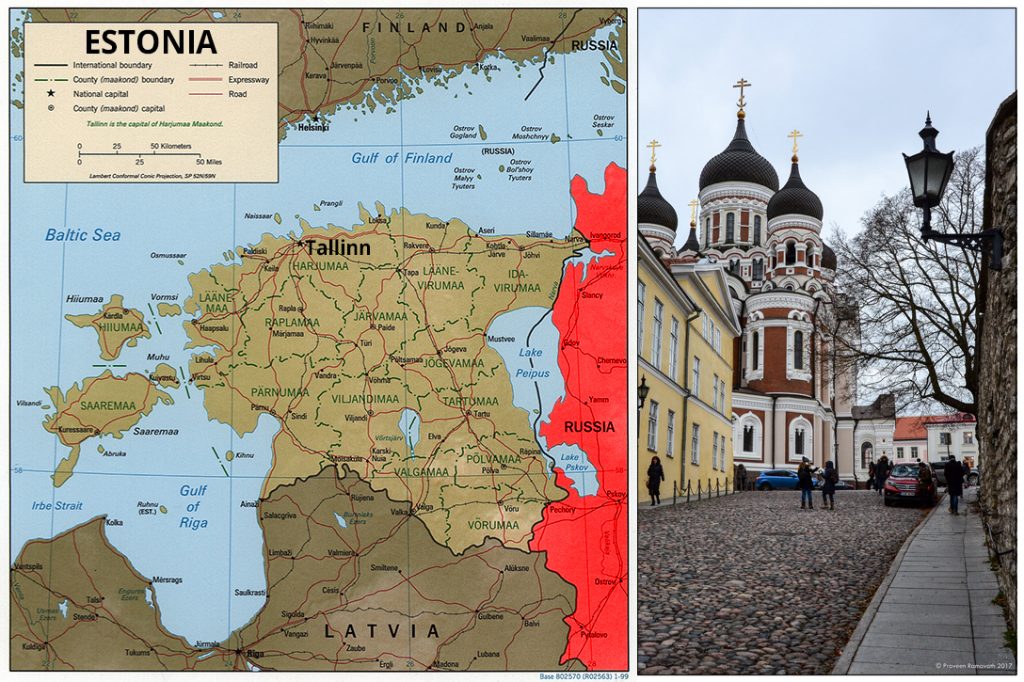
Map of Estonia and street scene in Raekoja Plats, Tallinn, Estonia. Photo credit: Praveen Ramavath / Flickr (CC BY-NC-ND 2.0)
Both Estonia and the EU asserted that Russia had grabbed him on Estonian soil. He was released after a year, traded for another former Estonian Internal Security Service officer charged with cooperating with the FSB. Now, Estonia, like the United States under Trump, is building more modern border fortifications; the Estonian-Russian wall keeps getting more costly, by a factor of four so far.
On one of my cab rides around Tallinn, my driver, an elderly man, peered into his rearview mirror as I settled into my seat, and launched into a mini-tirade. “First, it was Russians here, now it’s Americans,” he growled with obvious displeasure, in heavily accented English.
“Who do you prefer,” I asked, not looking for an argument.
“I tell you what,” he replied. “The Russians killed my father when I was nine, and I grew up in Siberia, which was really hard.” He had returned to Estonia as an adult.
I thought he was going to say he preferred Americans, but then he surprised me. “I have been driving a cab for most of my 70 years, and look at me. I have nothing. Freedom? Ptooey!”
‘It Was Really Strange’
Aivar Rehe had been no stranger to banks offering services to “suspicious customers.” He had been CEO of Sampo Bank in Estonia — which had a track record of nonresident accounts — before it was acquired by Danske Bank. And he ran Danske during the entire time the alleged laundering was going on. Yet the government announced that he was “not a suspect” and there were various vague statements from officials indicating that he was cooperating or had cooperated with the authorities.
For whatever reason, this seems to have mollified most of those who might probe deeper. But not everyone bought the government’s narrative.
“It was really strange,” noted Sulev Vedler, a local journalist who has covered the story, over a coffee in the lobby of my hotel. “The family did not participate in the search. And police said the dogs were in the yard.”
What Vedler meant was that several other homes and gardens abut the Rehe property, but no one had reported hearing anything unusual. For instance, a dog barking. Rehe was devoted to his dogs. He took them out himself at every opportunity.
Why had the dogs not caused a commotion sufficient to attract attention? And is it credible that they did not, apparently, notice the dead body for 48 hours?
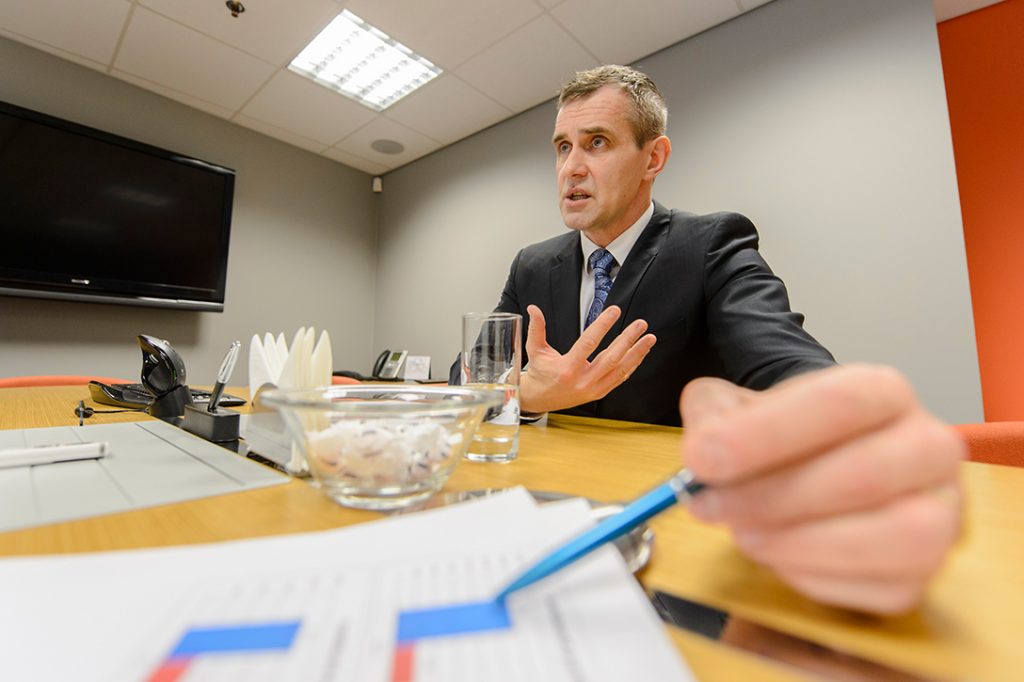
Aivar Rehe at work. Photo credit: Tanel Meos / Eesti Ekspress
One night while I was in Tallinn, Aleksei texted me. Did I feel like grabbing a beer? I met him in the old town where we had a drink in a charmingly bare-bones place with an appropriately non-responsive bartender. Several patrons were eager to practice their English; one woman insisted on buying us shots layered to look like the Estonian flag — three equal bands of blue, black, and white. Then we went on to an “English pub” that Aleksei liked. Periodically, he went out for a smoke. On his third or fourth trip, he came back excited, and recounted what had just happened.
“See those drunk guys over there? I started chatting with one, and he asked about me; I happened to mention what I do. And would you believe it? He told me he knew Aivar.”
When Aleksei had mentioned Danske Bank, the fellow said he had known Rehe all the way back to the 1990s, when they had both worked together at another bank, one he described as “dodgy.” He said that in the last few months Rehe had been exploring opening a bank in Ghana.
That was the first I’d heard of this. It didn’t sound like a man who had given up hope. It was also a controversial choice of destination for a man fleeing a scandal that had damaged his reputation for probity — given the chaotic state of Ghana’s own banking industry and its reputation as a hub for the international narcotics trade. (A web search then turned up the intriguing fact Estonia is the drug-overdose capital of Europe. A higher proportion of its citizens die from drug overdoses than in any other European country.)
Of note, Putin recently announced that Russia plans to provide “significant assistance” to African countries in battling a range of security threats, including “organized crime, drug trafficking, [and, wait for it] money laundering.” [Italics added]
The day after the bar encounter, I received a text message from Aleksei containing a link to an article. Unsourced, it reported that
Aivar Rehe, who took to the skies two weeks ago, claimed that after losing his position as CEO of Danske Bank he lost much of his savings due to poor business luck. He allegedly lost money in Africa, which is one of the favorite areas of venture capitalists due to population and rapid economic growth.
It was hard to know what to make of this. It didn’t make a lot of sense that an experienced banker — and tax expert — would take these kinds of risks.
Rehe had landed work again in Estonia at a small local entity, called BigBank, and though he had hopes of running the place, word of mouth had it that he ended up being turned out in December of last year, allegedly because his past presented problems. By law, all bank managers in the European Union must be “fit and proper,” and Rehe, though never charged with wrongdoing, was tainted. (The Rehe family did not reply to emails seeking clarification on this and other matters.)
I had tried to interview a bunch of government and police officials. Almost all found some excuse not to see me, with the exception of State Prosecutor Marek Vahing, who is handling the Danske case. Accompanied by a press aide who interjected periodically, and, it seemed, tried to put me on the defensive for doing my job, Vahing was polite but told me almost nothing, while acknowledging that he was constrained by law.
He did mention one thing I thought interesting: that the government had not been in touch with Rehe for an entire year. I found it odd that, with an ongoing investigation of a financial crisis of this magnitude, contact with the bank’s former top man would not be more frequent, and more recent.
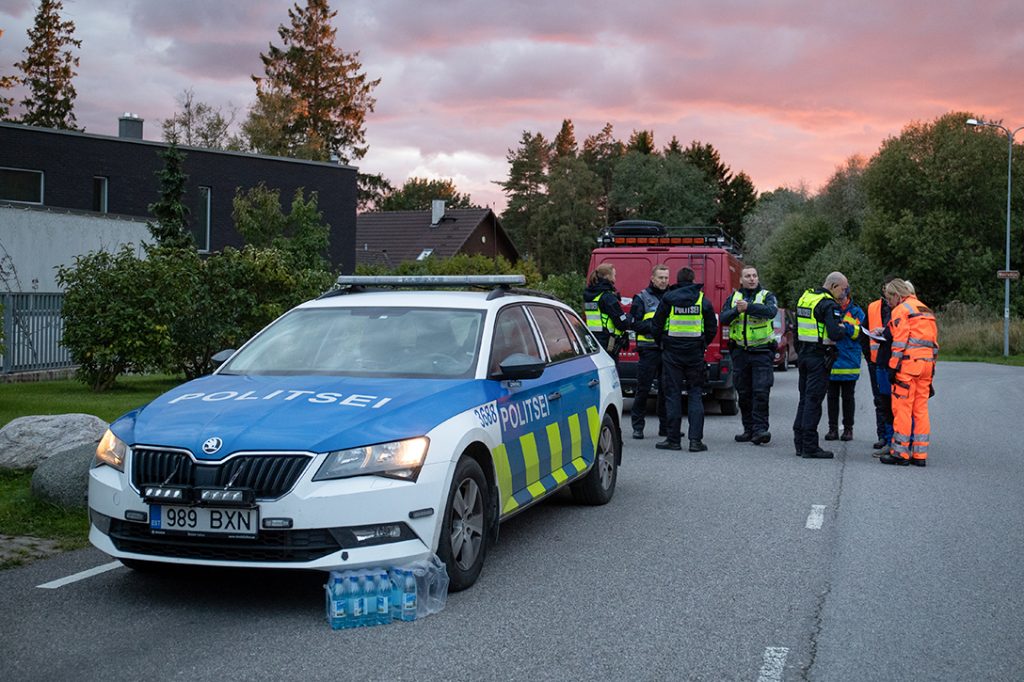
Police in Viimsi, searching for Aivar Rehe, finish their work for the day, September 23, 2019. Photo credit: Ilmar Saabas / Eesti Ekspress
That brought to mind another nagging angle: the baffling statement that, when Rehe went missing, the police considered the possibility that he had been placed into a witness protection program.
Since the authorities wouldn’t say anything, I needed to go directly to those who could — and might have their own reasons for setting the record straight.
Visiting the Rehe Home
Local journalists told me that, by and large, they had avoided bothering the grieving family. More aggressive reporters had tried but were unable to engage family members. I thought I’d go the old-fashioned route: just show up and see what happens. Mattias agreed to drive me.
First, we stopped at the cemetery. I tried to see the date of death but Rehe’s tombstone was obscured by a mountain of bouquets and memorial ribbons.
Mattias had previously shown me the public Estonian Cemetery web portal, which, curiously, says the date of death was Wednesday, the day his body was found, rather than Monday, the day he allegedly hanged himself. Mattias also mentioned finding it odd how fast the listing went up. He said he had never seen burial information posted with such haste.
Then it was on to Pirita, the upscale neighborhood where the Rehes live. We got out of the car, and peered through the fence at the house, a large two-storied modern structure with plenty of windows. I wondered whether a family member could see a body in the garden, at least from upstairs.
Mattias, who had been one of the first on the scene after the body was found, said he’d been struck, based on his own past experience as a police investigator, by what looked like evasive measures. He noted that the authorities seemed in a great hurry to clear the scene. The body was hustled out, not through the yard to the driveway, but into the house and from there directly to the attached garage, into which a plain white van had backed. Thus, it was not possible to see anything — no body bag. The entire scene was cleared in less than 90 minutes.
When I told Mattias that I was going to try to talk to the family, he told me they’d seen him outside the house before, and he didn’t want to spook them, so he returned to the car, drove down the road a bit, and parked.
I approached the see-through metal gates, through which I could glimpse a black Mini with Estonian plates, and rang the bell. Much to my surprise, someone came out almost immediately — a svelte middle-aged brunette. She didn’t identify herself, but Mattias later confirmed it was Rehe’s widow, who he told me had previously been “huge” and was known to have greatly slimmed down over the past year.
Aivar, too, had lost weight in his last year. Were they on a crash-diet together? If so, did that mean anything? Especially given that odd claim [reported in Part 1] that police initially wondered if Rehe had entered a witness protection program. This was just another of the strange, possibly irrelevant facts that locals found interesting.
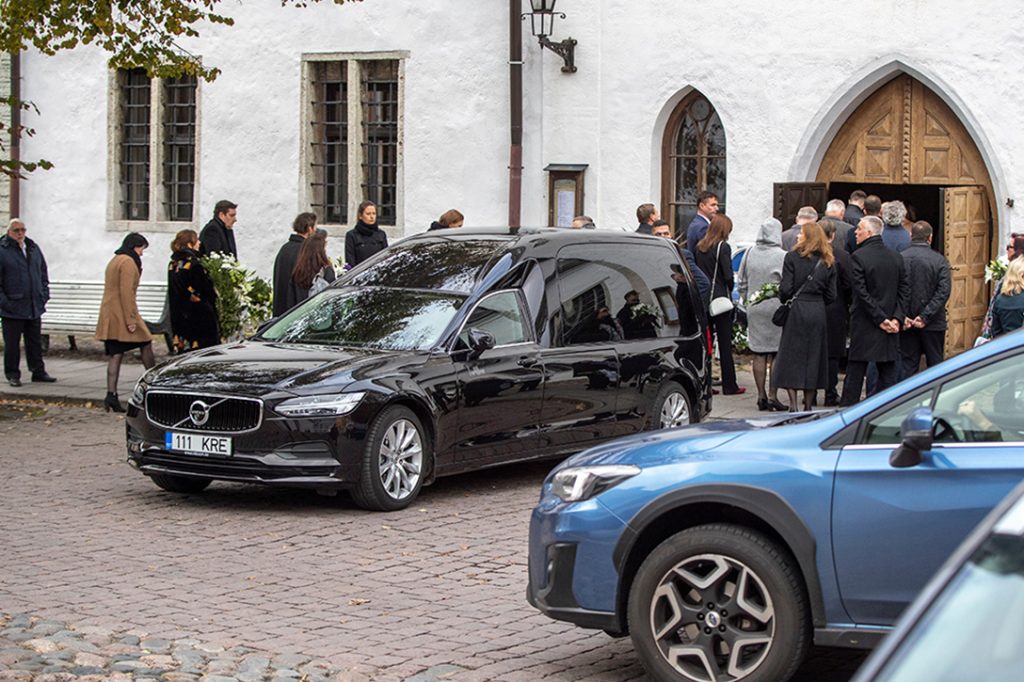
Aivar Rehe funeral, Dome Church, October 3, 2019. Photo credit: Andres Putting / Ekspress Meedia
Mrs. Rehe made clear that she was not happy to see me. “Why are you people bothering us?” she demanded. She and her family had nothing to say, she said.
As gently and sympathetically as I could, I explained that this was of course a matter of great public concern, and I hoped that she might want to clear up some of the unanswered questions. I tried to keep her engaged.
Suddenly, the door opened and a second woman came out. Younger, also a brunette, she was barefoot in a showy animal-print coat, and bore a striking resemblance to Kim Kardashian. I later discovered she was Rehe’s daughter, Brigitta.
Right about this time, another car, a small white vehicle, shot into the driveway. A third woman emerged, and though she didn’t identify herself, I learned she was a second daughter. Someone had called her and she had raced over.
Although Brigitta didn’t say much, she did most of the talking. (I learned later that she lives in London, where she’s done marketing and PR work, and has a reputation locally for seeking celebrity. She had circulated a media advisory, warning that the family’s privacy be respected, and that journalists stay away from the funeral.)
To me, Brigitta angrily complained, “My father’s death is due to hounding from the media!”
This puzzled me. It seemed totally uncharacteristic of a local press corps I found as polite and restrained as any I have seen. The published interview by Joosep Värk [excerpted in Part 2] hardly constitutes hounding, as the interview had been given voluntarily, but it was strikingly provocative. And Rehe seemed quite rattled by it.
In any case, I tried to keep Brigitta engaged with a series of standard reporter’s questions, but she just stood there glaring at me, and said nothing. Yet, she made no move to break away.
What about the scandal?
“His death had NOTHING to do with Danske Bank,” she yelled. This bewildered me. It seemed certain that, one way or another, it had everything to do with Danske Bank.
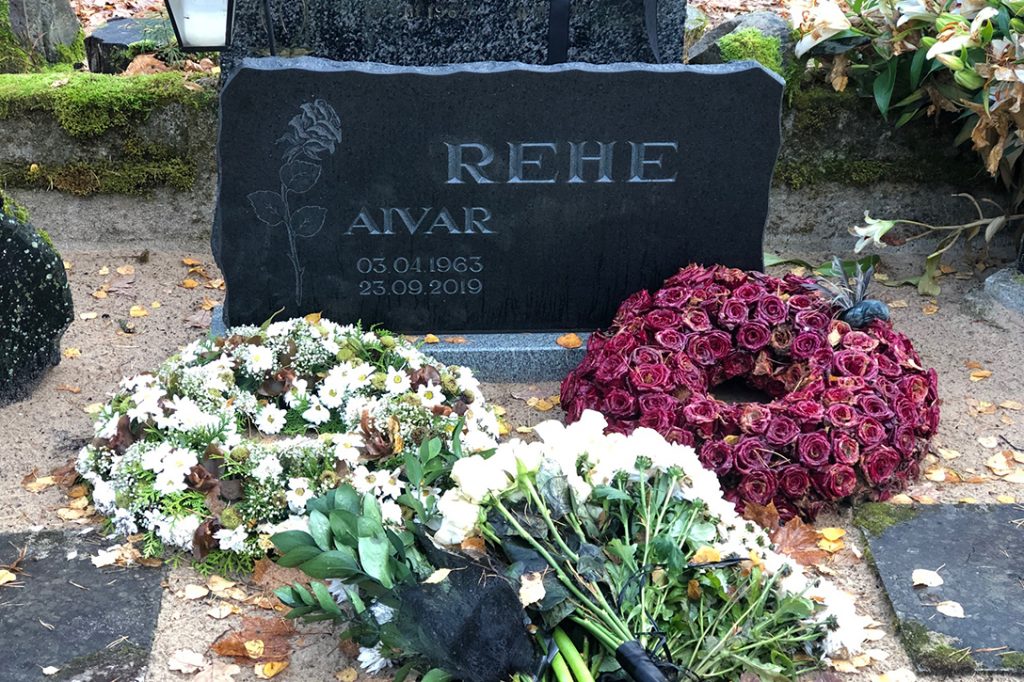
Aivar Rehe’s grave. Photo credit: Andres Putting / Ekspress Meedia
And why had the body not been found on Monday? She gave me a look of disbelief that I would ask her that kind of pointed question, and again declined to provide details. I explained that the police were saying the only reason they hadn’t searched the premises was because the family had specifically asked them to stay out. This infuriated her.
“We said no such thing!” she said. “The police are incompetent!”
With that, my curiosity only intensified. “Can you walk me through that discrepancy?” I asked. She remained silent.
I got in one more question. Did her father have pending business in Africa? “I’m not going to talk about anything.”
And then: “He was a wonderful man who always did the right thing!”
For some reason, the two daughters lingered, in no apparent hurry to head back into the house, but not interested in telling me any more. Maybe they were waiting for me to leave. Finally, I gave Brigitta my card and asked her to get in touch if she decided she wanted to help me clarify things further. She took it, shrugged, and then went back into the house.
She never did call. And a subsequent email to an address I found for her went unanswered.
A short time later, bank staff were contacted by Russian speakers who warned: “The bank will sink after this” and “Do you really feel you can walk home safely at night?”
I later learned that, about two weeks before Rehe’s death, a delegation had come from Russia to speak with the Estonian authorities about cooperation in combating money laundering. Which is interesting because of suspicions about what in banking parlance is called “the beneficiary owners.”
“Putin is all over it,” money laundering expert Graham Barrow had told me. “You don’t shift that much money out of Russia without Putin having a say-so. In Russian, they call a protector a ‘krysha.’ Putin is krysha of the krysha. Protector of the protectors.”
Meanwhile, Putin, who some speculate is now the richest person in the world, has taken to accusing a potent political opponent, the charismatic opposition leader Alexei Navalny, of… money laundering.
According to sources cited by the Danish newspaper Berlingske, when Danske Estonia officials received the internal whistleblower report, they sent representatives to press an allegedly Putin-connected Russian account holder, Lantana Trade LLP, for information on the ultimate owner.
To put it mildly, the Moscow meeting did not go well. A Danske staffer returned “in a state of shock.”
A short time later, bank staff were contacted by Russian speakers who warned: “The bank will sink after this” and “Do you really feel you can walk home safely at night?”
Death of a Banker: Did Laundered Russian Billions Play a Role? Part 1
Death of a Banker: Did Laundered Russian Billions Play a Role? Part 2
Nonetheless, Danske Bank Estonia, under Aivar Rehe, shut down Lantana’s accounts — as well as those of 20 other Russia-tied firms aggressively moving money among themselves and Lantana, through Rehe’s branch.
So there’s that — one more thing to add to the ponderables we have to keep in mind if we are to get to the bottom of this.
Years ago, I lived for a while in the Balkans, a place historically known for its endless intrigue and confusing claims and characters. It even spawned a term: Balkan Intrigue. The Baltics, however, were supposed to be more clean and comprehensible, along the model of Scandinavia. However, this experience had led me to question that assumption.
One night as I lay awake in my hotel room, with the bright lights of Tallinn below my window, fragments of things I’d heard or read ran through my mind: voices warning witnesses to tread carefully… do you really feel you can walk home safely at night… all those other investigators and whistleblowers who were murdered or had “accidents” or committed suicide… credible threats in recent months to Rehe’s life… the gun license but no gun… might have been kidnapped… witness protection program… all roads lead to Putin… I even remembered an old adage rumored to be from the KGB — “Anyone can commit murder, but it takes an artist to commit a suicide.” Was Rehe given a choice? “Kill yourself, or we will do it for you. And if we have to do it, you may not be the only one to be hurt.”
If you want to get a handle on the big forces that shape our world, you need to pick a place, and start small. Maybe just try to understand what happened in one small place, behind a house.
That’s what was on my mind as my flight took off from Tallinn, headed back home. This single incident certainly deserves ongoing inquiry. For it is part of a much larger story, one that touches all of us, since corruption on such a vast scale diminishes the prospect for a fair system that serves the public, everywhere.
Then I thought of the dogs. The real problem is not just with dogs that did not bark. It is an entire system where the watchdogs are failing.
Massive amounts of funds are apparently being laundered by groups wrongfully enriching themselves through illicit conduct at the expense of individual citizens and entities and the overall economic system.
To be sure, this story is certainly not over.
And we now have reason to ask yet more questions: As we were going to press, news broke of another alleged suicide involving a banker: the former head of US private wealth management at the aforementioned Deutsche Bank — an intermediary that helped Danske process suspect customer transactions in the United States.
Just as Danske Bank was being investigated in part regarding transactions relating to Russian President Vladimir Putin, Deutsche Bank was being investigated in part regarding transactions relating to US President Donald Trump, some of whose own loans were approved by the latest victim.
If you have information that may shed light on Aivar Rehe’s death, on money laundering, on any of the issues we’ve raised here, please don’t hesitate to make contact.
And if you believe this kind of work is essential, we hope you will consider backing our brand of open-minded, forensic, reader-funded inquiry.
Many thanks to those who supported this initial project and those who continue to support our work.
Related front page panorama photo credit: Adapted by WhoWhatWhy from Petar Milošević / Wikimedia (CC BY-SA 4.0), Hans Põldoja / Flickr (CC BY 2.0), Danske Bank / Wikimedia, President of Russia (CC BY 4.0), US Treasury / Wikimedia, and private collection.
